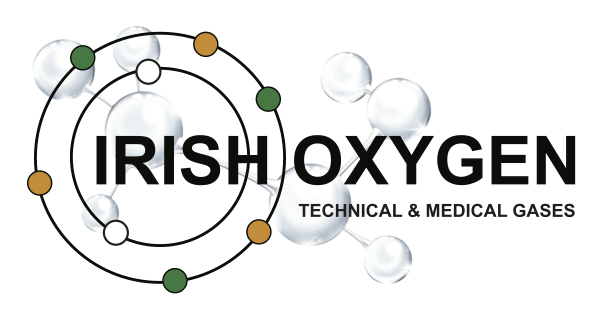Safety with Oxy-Acetylene Welding or Cutting
PDF Version (30 KB)
Fires and Explosions Due to the Misuse of Oxygen
Oxygen is necessary for combustion. Normal air contains 21% of oxygen and the way in which common materials burn in it is well known. In concentrations higher than 21%, however, the situation is different. Flammability (or ease of ignition), combustion rates and combustion temperatures all increase. Materials such as clothing, which do not burn readily in air, will burn much more actively in an atmosphere that is enriched with oxygen. Enrichment of the atmosphere of a room to approximately 25% oxygen creates a hazardous situation, and this level can be particularly dangerous in confined spaces where accidents usually serious and frequently fatal continue to occur.
Work in Confined Spaces
During work in confined spaces, such as are found in the shipbuilding or construction industries, the atmosphere of the space sometimes becomes uncomfortable due to welding fumes or heat. It is a common but dangerous practice to use oxygen, usually from the hose of a welding set, to 'sweeten' the air in a confined space when the atmosphere becomes stale. This practice is very dangerous because a large volume of oxygen can be released into the air even if the valve is turned on for only a short while. In one case where this was done, nothing untoward happened until hot work commenced; sparks ignited the clothing of those in the vicinity and they were fatally burned. Oxygen must never be used for 'sweetening' the air of a workplace. Proper ventilation of the working area so as to supply an adequate amount of fresh air should be provided. The temptation to use oxygen in this uncontrolled way must be resisted at all times, even during rescue operations after an accident.
Other Hazards During Welding and Flame Cutting
It is not generally known that, during the process of flame-cutting of metals, all the oxygen supplied to the torch may not be consumed either by the flame or by the cutting process. In certain circumstances during normal operation, appreciable quantities of excess oxygen can be released into the atmosphere of the workplace. In a poorly-ventilated situation this oxygen may enrich the air in the vicinity of the operator. A spark from the cutting operation is all that is then needed to cause the worker's clothing to burn with almost explosive violence. Such accidents are usually fatal. Proper ventilation of the workplace is essential when this work is being done.
The practice of nipping or kinking the hoses supplying welding or cutting torches in order to cut off the gas supply while changing the torches is completely unacceptable. Accidents have occurred when the operator has lost his grip on the hose, which then became uncontrollable and allowed a large quantity of oxygen to escape. The gas supply should always be turned off at the isolation valve.
Another bad practice is that of leaving blowpipes and hoses inside a confined space during a lunch break, or overnight. A very small leak through a valve over such a period, of either oxygen or fuel gas, can result in a serious fire or explosion when work is resumed. Wherever practicable, compressed gas cylinders should be located outside confined spaces and torches and hoses should be removed to the open-air during a break in operations.
The Use of Oxygen as a Substitute for Compressed Air
Two incidents illustrate the extreme danger of using oxygen as a source of pressure.
Several people were very seriously injured when attempting to start a diesel engine by admitting oxygen at high pressure into the cylinders to rotate the flywheel. This was normally safely done by using compressed air from an air receiver which was connected, via pipe work and valves, to the engine. On this occasion there was no pressure in the air receiver so it was pressurised with oxygen from a nearby welding set. Shortly afterwards there was a violent explosion and a fire, probably due to the compression-ignition of oily residues in the air receiver and pipework in the presence of oxygen at high pressure.
In another incident, a man was repairing his car in the garage of his private house. He decided to use high pressure oxygen from a welding cylinder to clear a blockage in the petrol line. Immediately the oxygen was turned on, there was a violent explosion. Five persons were injured and, in the subsequent fire, both the car and the garage were completely destroyed.
Oxygen Contact with Oil or Grease
Oil, grease and other combustible materials can burn or even explode if their ignition temperatures are reached in the presence of pure and especially pressurised oxygen. Such temperatures can be reached when a cylinder valve is opened quickly. Regulators, valves and pipework on compressed gas systems should be kept clean and free from oil and grease. If a fixed pipe work system for oxygen is to be installed, then the initial internal cleaning before admitting oxygen should be properly carried out.
